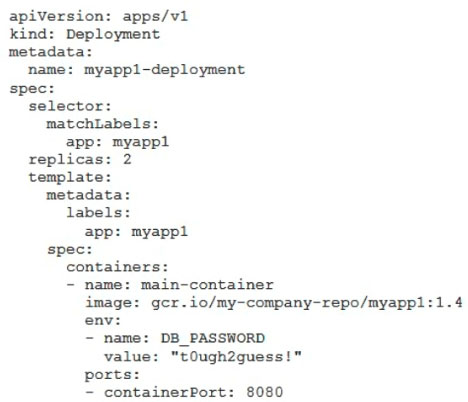Every employee of your company has a Google account. Your operational team needs to manage a large number of instances on Compute Engine. Each member of this team needs only administrative access to the servers. Your security team wants to ensure that the deployment of credentials is operationally efficient and must be able to determine who accessed a given instance. What should you do?
D
Reference:
https://cloud.google.com/compute/docs/instances/adding-removing-ssh-keys
You need to create a custom VPC with a single subnet. The subnet's range must be as large as possible. Which range should you use?
A
You want to select and configure a cost-effective solution for relational data on Google Cloud Platform. You are working with a small set of operational data in one geographic location. You need to support point-in-time recovery. What should you do?
A
Reference:
https://cloud.google.com/sql/docs/mysql/backup-recovery/restore
You want to configure autohealing for network load balancing for a group of Compute Engine instances that run in multiple zones, using the fewest possible steps.
You need to configure re-creation of VMs if they are unresponsive after 3 attempts of 10 seconds each. What should you do?
D
You created a Google Cloud Platform project with an App Engine application inside the project. You initially configured the application to be served from the us- central region. Now you want the application to be served from the asia-northeast1 region. What should you do?
C
You need to grant access for three users so that they can view and edit table data on a Cloud Spanner instance. What should you do?
A
You create a new Google Kubernetes Engine (GKE) cluster and want to make sure that it always runs a supported and stable version of Kubernetes. What should you do?
B
You have an instance group that you want to load balance. You want the load balancer to terminate the client SSL session. The instance group is used to serve a public web application over HTTPS. You want to follow Google-recommended practices. What should you do?
A
Reference:
https://cloud.google.com/load-balancing/docs/https/
You have 32 GB of data in a single file that you need to upload to a Nearline Storage bucket. The WAN connection you are using is rated at 1 Gbps, and you are the only one on the connection. You want to use as much of the rated 1 Gbps as possible to transfer the file rapidly. How should you upload the file?
B
You've deployed a microservice called myapp1 to a Google Kubernetes Engine cluster using the YAML file specified below:
You need to refactor this configuration so that the database password is not stored in plain text. You want to follow Google-recommended practices. What should you do?
C